Making perfect creamy hummus like the ones you get in the backstreets of Beirut or Jerusalem couldn’t be easier. Here are all the tricks you need to make delicious hummus – every single time!
– You made hummus from canned chickpeas?!
My friend’s tone of voice was unmistakable. Shock, horror, disbelief. Apparently, not the way to do it.
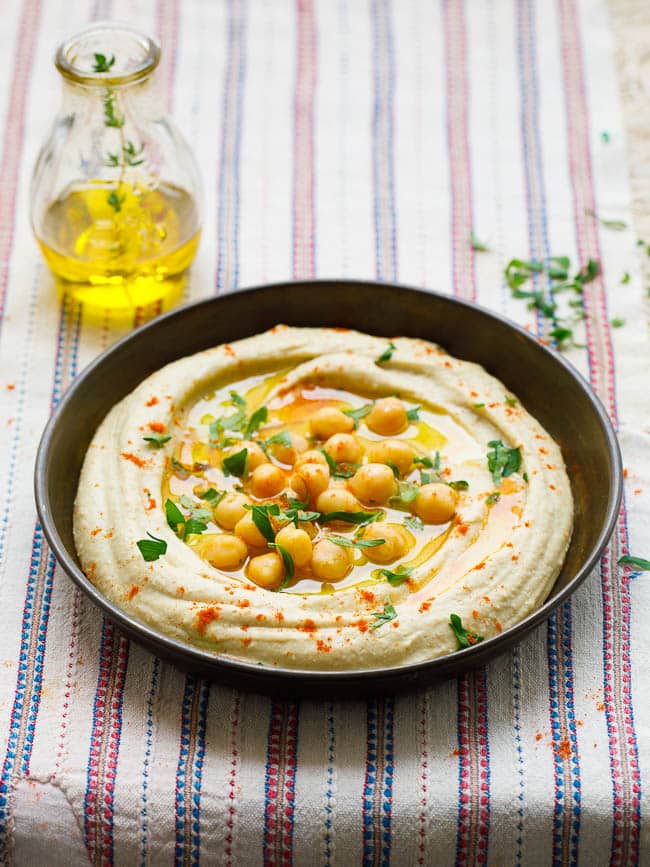
Don’t get me wrong. My friend isn’t usually disparaging about others’ efforts in food making. In fact, she’s quite the opposite. The directness of the remark, from one Israeli to another at a student pot luck party, startled me.
The hummus was actually pretty good, as acknowledged by all. But perhaps more importantly, for me at least, it gave me my first taste of the importance of this humble dish to anyone with a connection to the Middle East.
Hummus is the dish everyone wants to own.
The debated origins of hummus
The truth of the matter is, we don’t know who first invented hummus.
The word, simply Arabic for chickpeas, doesn’t really give any clues. Given the obviousness of crushing cooked chickpeas, it’s not hard to imagine the dish being discovered, independently, in multiple places.
The version which has become a global phenomenon, is humus tehina. Here, more or less generous amounts of tahini infinitely improves the flavour and texture of the mashed chickpeas.
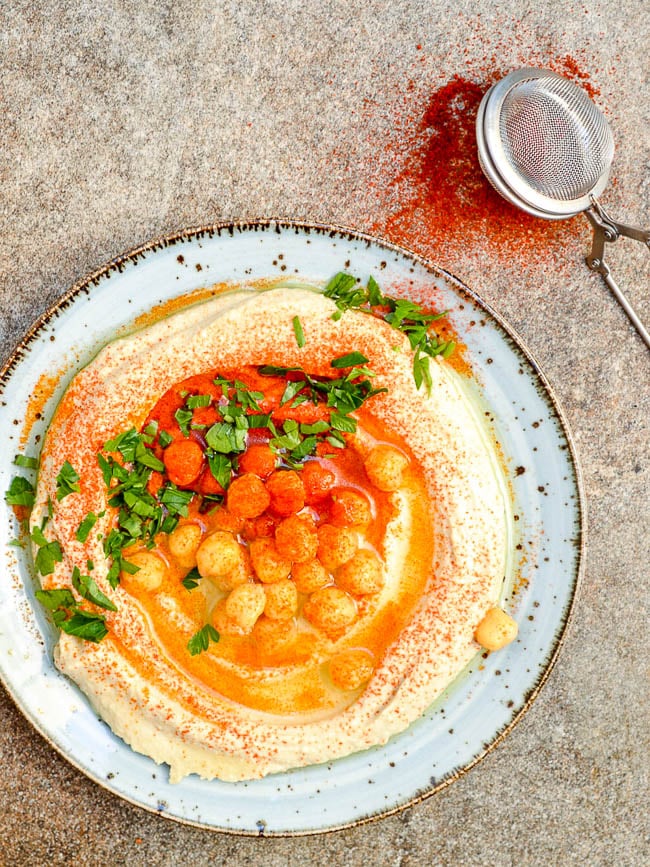
This version is apparently first mentioned in a 13th century Arabic cookbook. Seven centuries later, it was popularised worldwide through diasporas and Claudia Roden’s standard setting cookbok The Book of Middle Eastern Cooking, first published in 1968.
Today, adding tahini is so common, most of us can hardly imagine hummus without.
The secret to perfect hummus
Years later, after making (and eating) amounts of hummus that would earn the respect of any Middle Easterner, I’m clearly and confidently on the side of my surprised friend. If all I have is tinned chickpeas, I’d rather fry them up with some spices. Hummus I make not. For that, canned chickpeas are either too hard, too salty, or taste too much of its brine.
I always make hummus from dried chickpeas that I cook until near falling-apart tender. A little bicarbonate of soda (baking soda) is helpful to nudge the chickpeas along (alkaline water softens legumes more quickly). Otherwise, as with most legumes, patience also does the trick.
The other key to great hummus can be found in its second key ingredient. Tahini. It needs to be the best quality you can find and afford. And you need lots of it.
A good tahini is smooth and delicious even when eaten raw. Lesser versions are often claggy, with a slightly bitter or rancid aftertaste. In my experience they also tend to separate more easily, but this is purely anecdotal. And eventually all tahini will separate into three distinct layers: oil at the top, sediment at the bottom, and a thin sauce covering the in-between.
It is also my experience – as so many others also note – that Arab brands are generally far superior to Western ones. This includes Cypriot or Turkish ones – some of the stuff passing as tahini in Turkish supermarkets is barely edible.
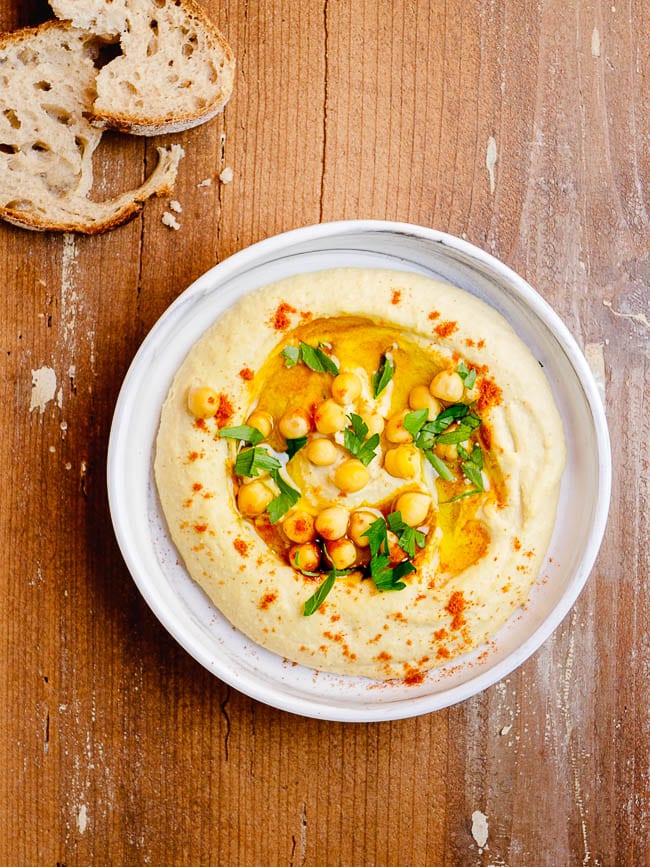
So if you’re looking at an aisle of tahini and unsure which one to choose, go with one with Arabic script on it. If you live somewhere with a wide range of options when it comes to tahini: Seek out smaller scale producers. They are invariably better. As a bonus, you often get to support a family-owned business who cares a lot about the produce they make and the surroundings in which they are made at the same time.
In Turkey, my go-to brands for tahini are Altan Manisalı, an Izmir-based family-owned producer, and Beşe 1885, which is more widely available and also has an excellent, stronger-flavoured version with double roasted sesame seeds. The latter is not to be confused with dark tahini from unhulled sesame seeds, which in my mind should be avoided at all costs. Especially if making hummus.
The final trick for a creamy hummus, is to leave the mixer running for long enough for the hummus to fluff up. There are different ways of achieving this. I leave the mixer running for another 3-4 minutes after the hummus is done, others whip up the tahini before adding the chickpeas.
Some people also like to peel the chickpeas, one by one. It is true that it makes the hummus even smoother. But since I’ve already got a super-smooth and creamy hummus using the tricks above, I find the extra labour isn’t worth it. You can still get an incredibly smooth and fluffy hummus without individually peeling hundreds of tiny chickpeas.
How to serve hummus
Variations including roast peppers, beetroot or other vegetables mashed with the chickpeas abound these days. Personally, I prefer my hummus as is, with good quality extra virgin olive oil and some paprika sprinkled on top. (In case you were in the dark until now: never put olive oil into the hummus itself – the tahini gives plenty enough fat and flavour.)
Some fresh pita or sourdough bread on the side, and I’m a very happy man indeed.
Occasionally, I’ll make more of a meal out of it. I love it topped with spiced minced meat, like baharat spiced hummus. Or better still, with spiced lamb, further elevated by pomegranate seeds and fresh herbs.
The recipe that follows is the way I’ve been making hummus for years. Occasionally, I’ll try recipes with a slightly different method, but I always come back to this one. It strikes the perfect balance between simplicity, creaminess and full-on perfect flavour.
It’s a hummus I am more than happy to proudly serve even the most hummus loving of my friends, whether from the Middle East or elsewhere. It’s by far the most popular recipe on my Norwegian language blog, where dozens of people search specifically for that recipe every single day.
The 6 steps to perfect hummus
In my newsletter Meze, I went a little more in-depth, covering the 6 steps I consider crucial to get hummus just as I like it.
You can read it here: The 6 steps to perfect hummus
If you’re not already a subscriber, consider joining the thousands that read my stories from inside the food culture of this region every week. Subscribe here.
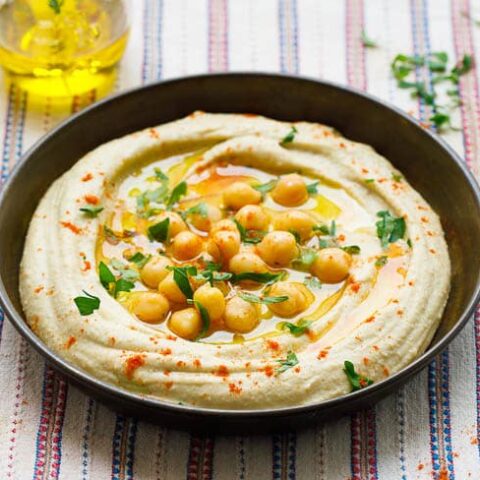
Hummus tehina
Ingredients
- 100 g dry chickpeas
- 1 tsp bicarbonate of soda (baking soda), divided
- 100 g tahini
- ½ lemon, juice only
- 2 garlic cloves, or to taste
- ¼ tsp ground cumin, optional
- ½ tsp salt
- 75 ml cooking water from the chickpeas, or ice cold water
To garnish
- extra virgin olive oil
- ground cumin or paprika, (optional)
- flat-leaf parsley, (optional)
How I make it
- Place the chickpeas along with ½ tsp of bicarbonate of soda (baking soda) in a large pot and cover with at least three times their volume water. Soak for at least 4 hours, preferably overnight.
- Change the water, add the remaining ½ tsp bicarbonate of soda (baking soda) and bring to the boil. Boil voraciously for 2–3 minutes, then skim and lower the heat to a soft simmer. Keep on simmer until the chickpeas are completely soft, anything from 25 minutes to an hour or more. The chickpeas are done when they yield no resistance when you gently squeeze them between your fingers. Drain and reserve the cooking water. Set aside a few of the prettiest-looking chickpeas to garnish.
- While still warm, add the chickpeas, tahini, lemon juice, garlic and 75 ml/⅓ cup of the cooking water, cumin (if using) and salt to a food processor. Mix until completely smooth and fairly fluffy, at least 3-4 minutes. Once it looks done, I usually leave it running for 1–2 more minutes. Taste and adjust seasoning or flavours to your preference.
- Transfer to a bowl and cover with plastic wrap directly on top of the hummus. There should be no air between the hummus and the plastic wrap. The hummus will be fairly runny at this point, but it'll firm up as it cools down. Leave to cool on the kitchen counter. If you're short on time, put it in the refrigerator to speed up the process.
- Serve on one large or several smaller plates. Use the back of a spoon while spinning the plate to create the characteristic dimples in the bowl. Garnish with the reserved chickpeas and a good drizzle of extra virgin olive oil, as well as some cumin or paprika and chopped flat-leaf parsley, if you like.
Tips & notes
- You can read it here: 6 steps to perfect hummus



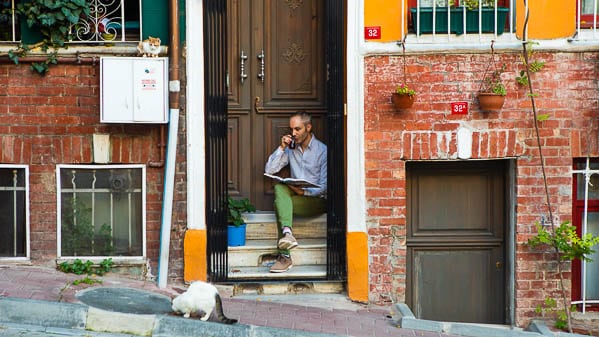
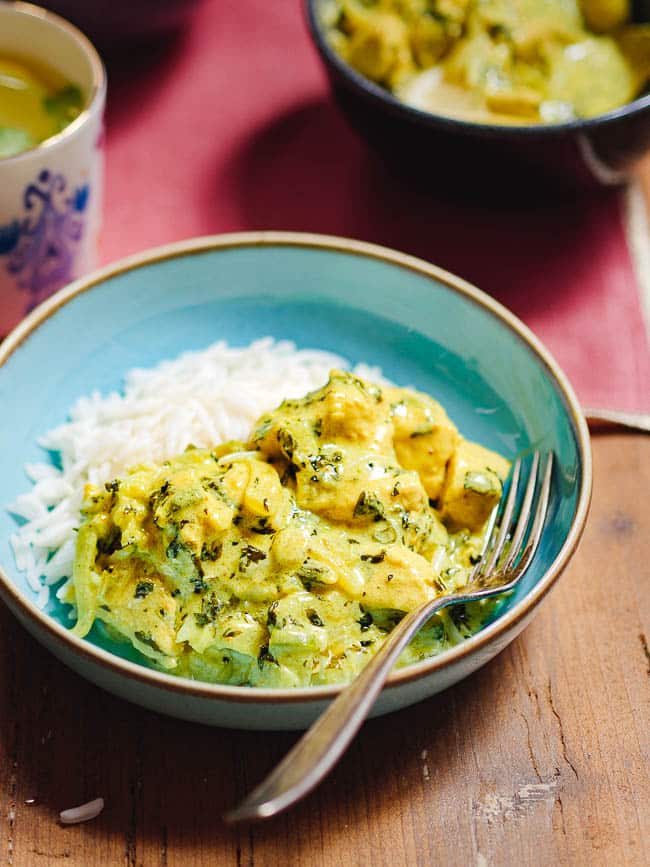
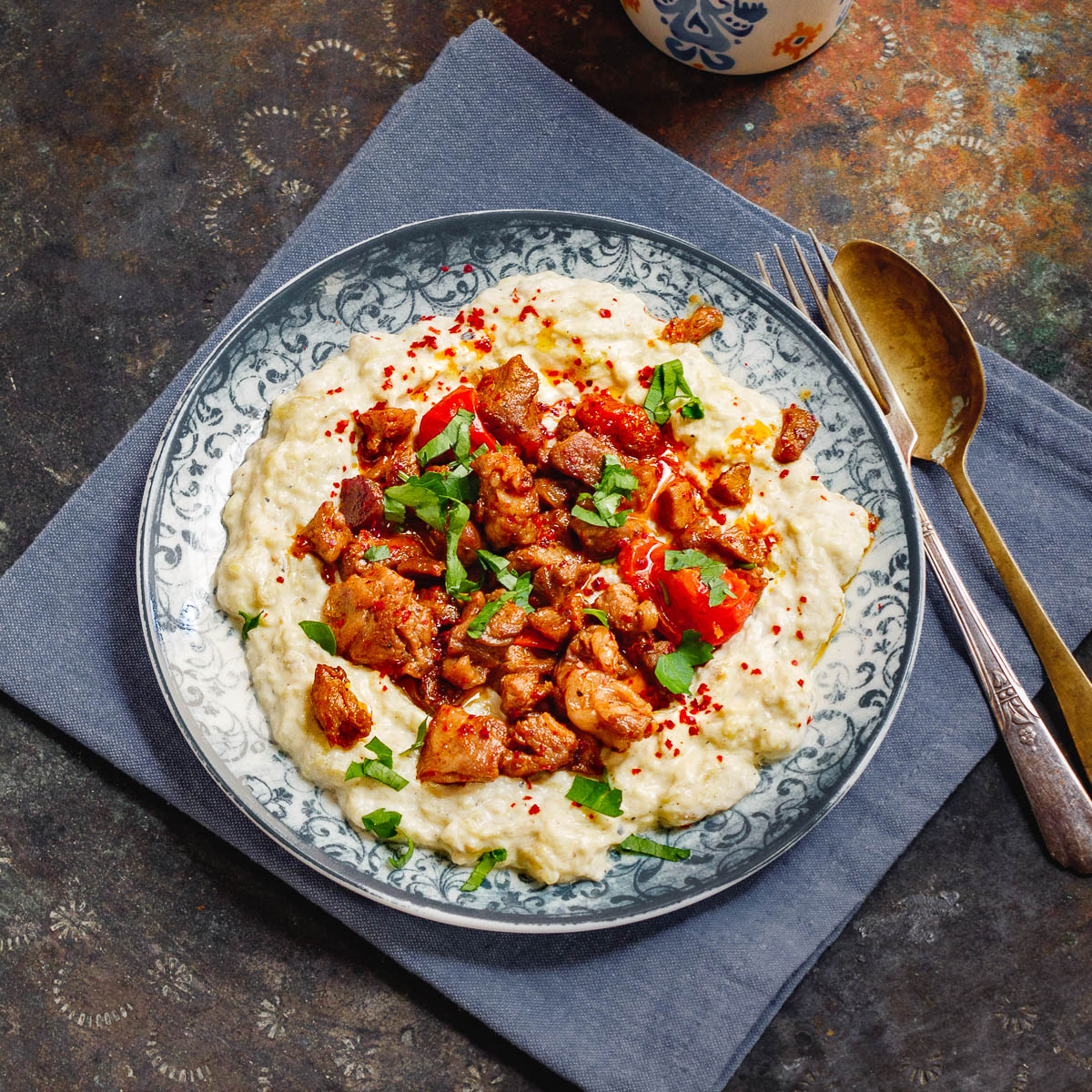
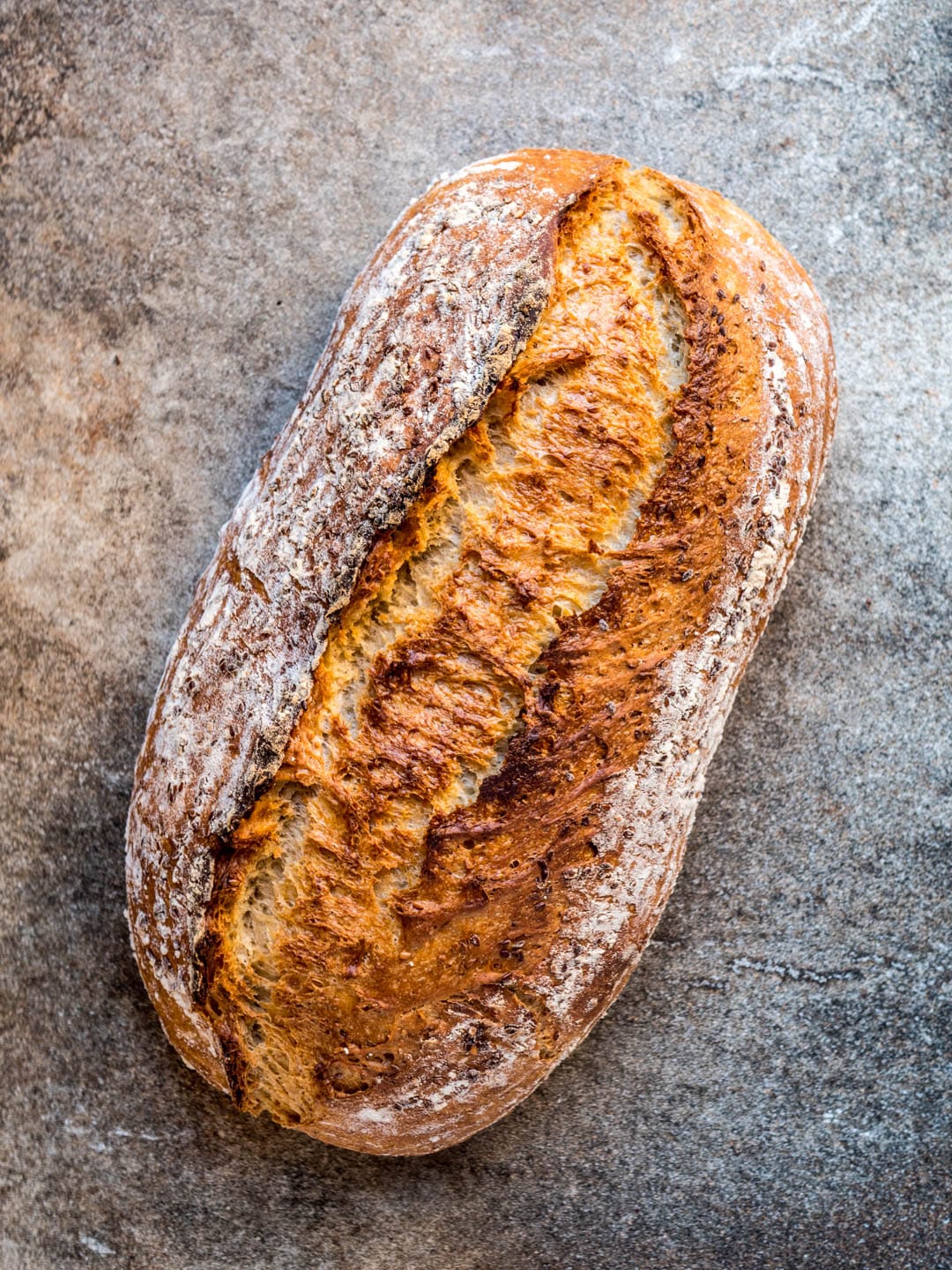
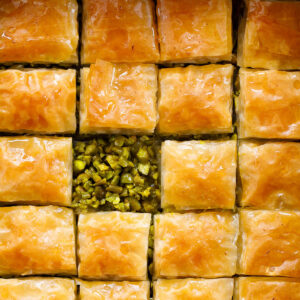
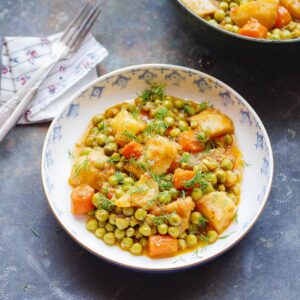
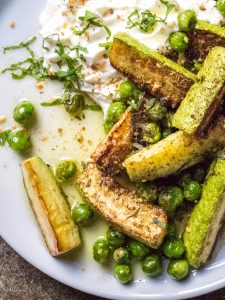
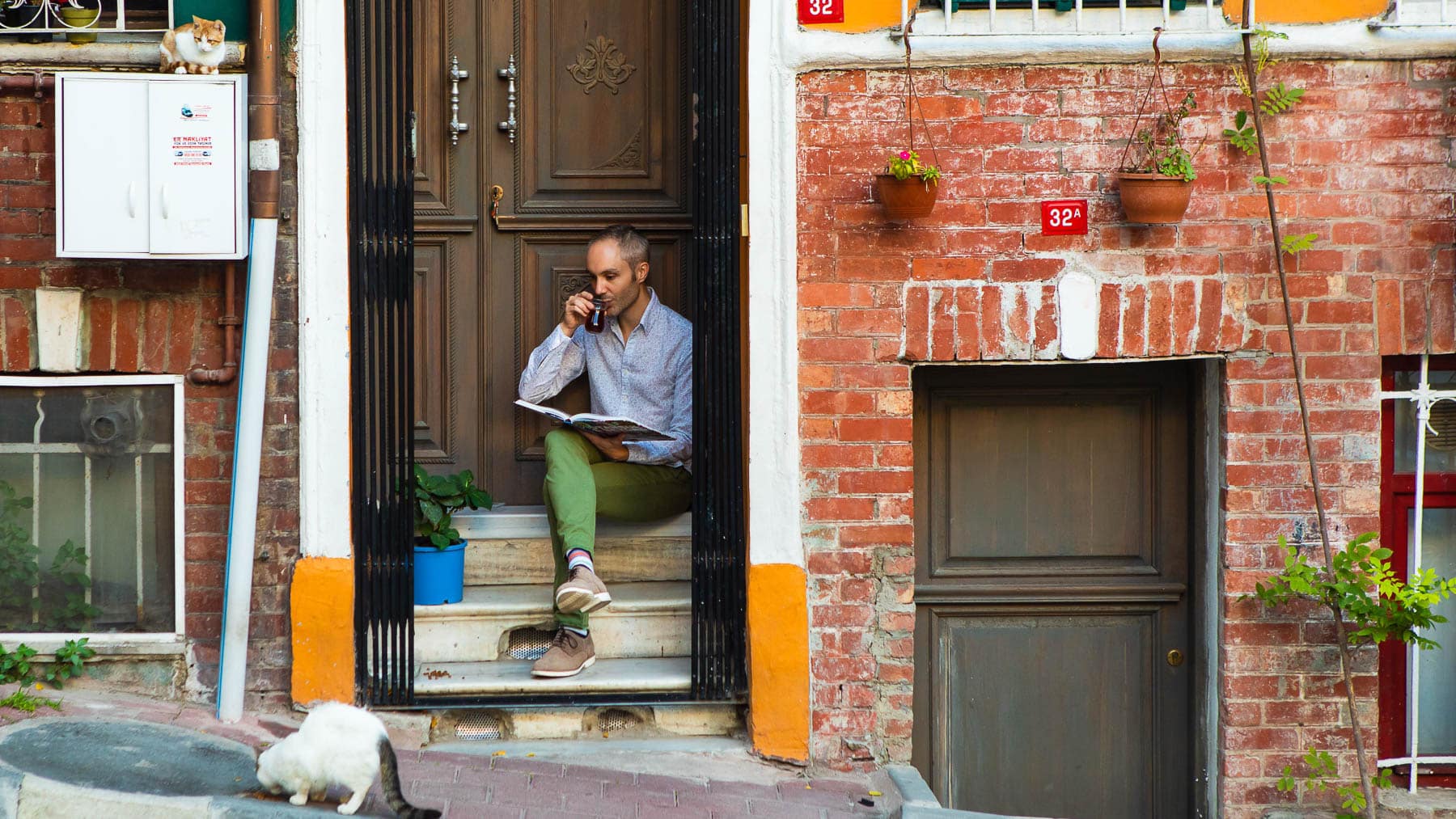



22 responses
This is now our hands down favorite hummus recipe!
That’s wonderful to hear, thanks for sharing!
Thank you for this. I’m making it for a party tomorrow and have pita chips and flatbread to serve. Have bought the correct tahini but will be cheating with tinned chickpeas due to time. Sorry but next time I will use fresh when I have more time as I KNOW it will taste better. I will report back on how wonderful this is going to be. I’m salivating already.
and thank you for this blog. ME and Turkish food is my favorite so thank you xx
All the best for the party!
I’ve previously made Ottolenghi’s version. I noticed you also soak your chickpeas with baking soda, whereas he only cooks his with baking soda. Does your method make the chickpeas softer?
I think any difference is probably marginal, but it gives your chickpeas a head start, so they may cook a little faster – though I haven’t done a side by side experiment.
For any of your fans in Turkey, I’ve just found you a buy that Tahini you recommended on Trendyol. They do both versions – the normal and the double roasted. Which do you use in preference?
You can also buy it directly from their website. I use the regular one for most things, including hummus. Double roasted is better suited for salad dressings (Antalya piyaz, for example) where you want a stronger flavour of roasted sesame.
I have enjoyed your email each month I am getting out of bed midnight to soak some chickpeas. Well done
That’s wonderful to hear, thanks so much!
Great recipe and very helpful suggestion regarding what tahini to look for. Thank you
Hi. Do u have a recipe to make your own tahini
Hi, I don’t recommend making your own tahini. Making good quality tahini is a cumbersome process which is hard to replicate at home. Commercial tahini may vary quite a lot in quality, but I find Arab brands are generally better than Western ones. Good luck!
Last night I made the hummus from cooked chickpeas. This was the best hummus ever. I lived in the ME for a long time and it has always been one of my favourite foods. This one was smooth, tasty and just perfect. Thank you
Hello,
Just discovered your blog, really interesting !
I am in love with middle eastern food and a huge fan of tahini.. I am pursuing a quest to try as many as I can and to find the ones that makes a real difference..
You are mentioning Manisali that could be found in Istanbul.. I will be there next week end, in Istanbul, and I cannot wait to try and get a jar of this one ! Do you mind asking if you have any other recommendations ? Have you discovered any other products based out of tahini that are incredible and can be found in Istanbul ?
First time for me in Istanbul, any other recommendations in terms of food, healthy products … ?
Would be a pleasure to meet up with you if you are around ! 😉
Vincent
hello,
how important is to mix the whole thing while the chickpeas are hot ? does it make such a big difference ? i always cool them under tap water after cooking so i can serve it straight away. i suppose you have tried both ways, i would be curious to knw the difference.
many thanks!
Apologies for the late response, this blog has been dormant for a few months. Mixing while the chickpeas are still hot makes a difference to the texture, so I’d recommend doing that still. To cool it down quickly, you can spread it on a big (cold) plate and cover with plastic wrap – it’ll cool down a lot faster than if you leave it in a bowl.
Hi! I just discovered your blog, it’s amazing!
I have just one question, do you blend them straight away without taking off the skin?
Thanks a lot
Pat
Thank you! I don’t usually take off the skin, but I do remove the ones that come off and float to the top naturally while cooking the chickpeas. If you do take the time to remove the skin, you’ll get an unbelievably smooth hummus. I find, however, that it’s more than smooth enough even when I don’t, and therefore not usually worth the extra effort. Have a nice day!
I must try you Hummos!!
*your
Yes! And please tell me once you have 😉